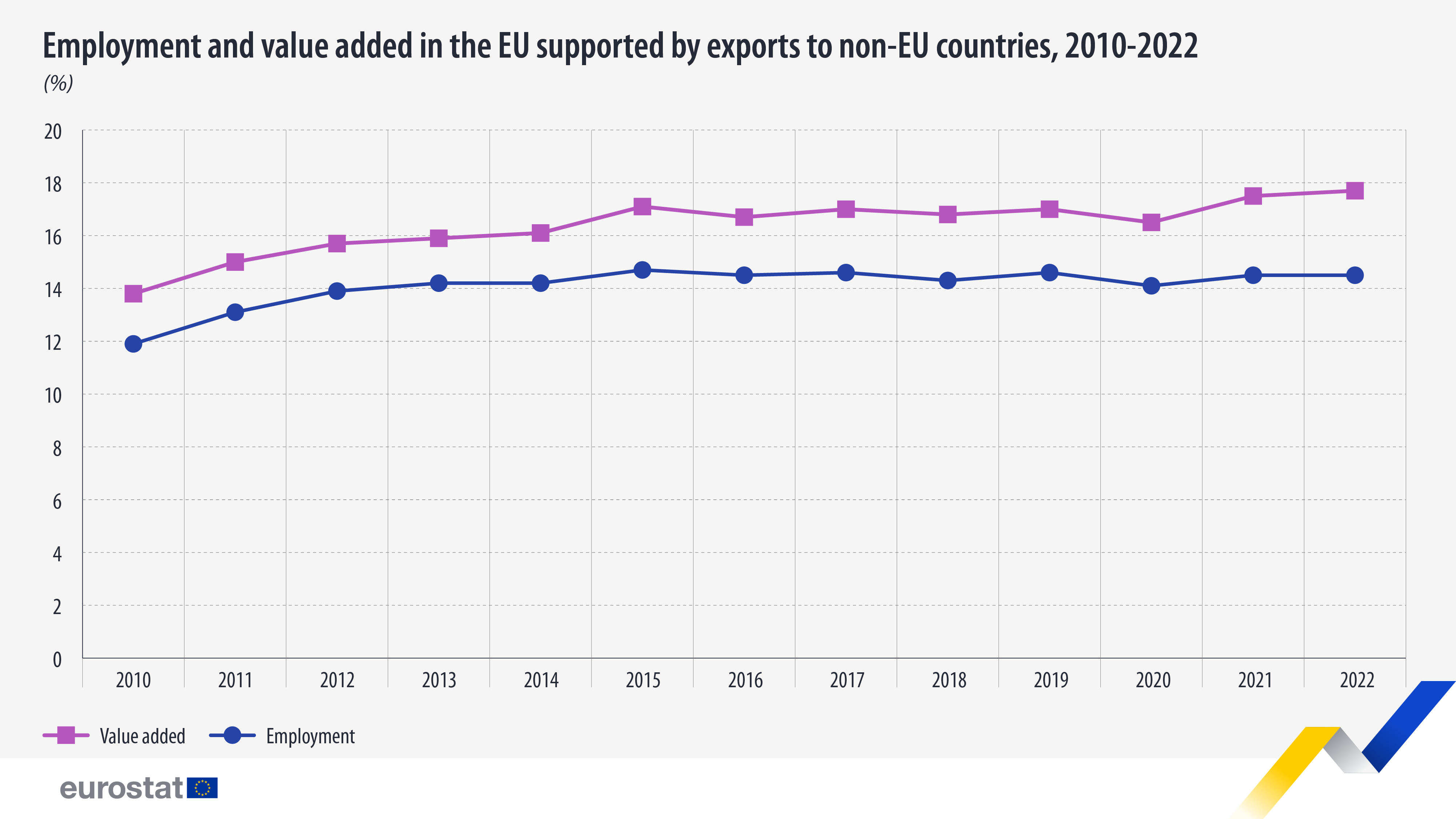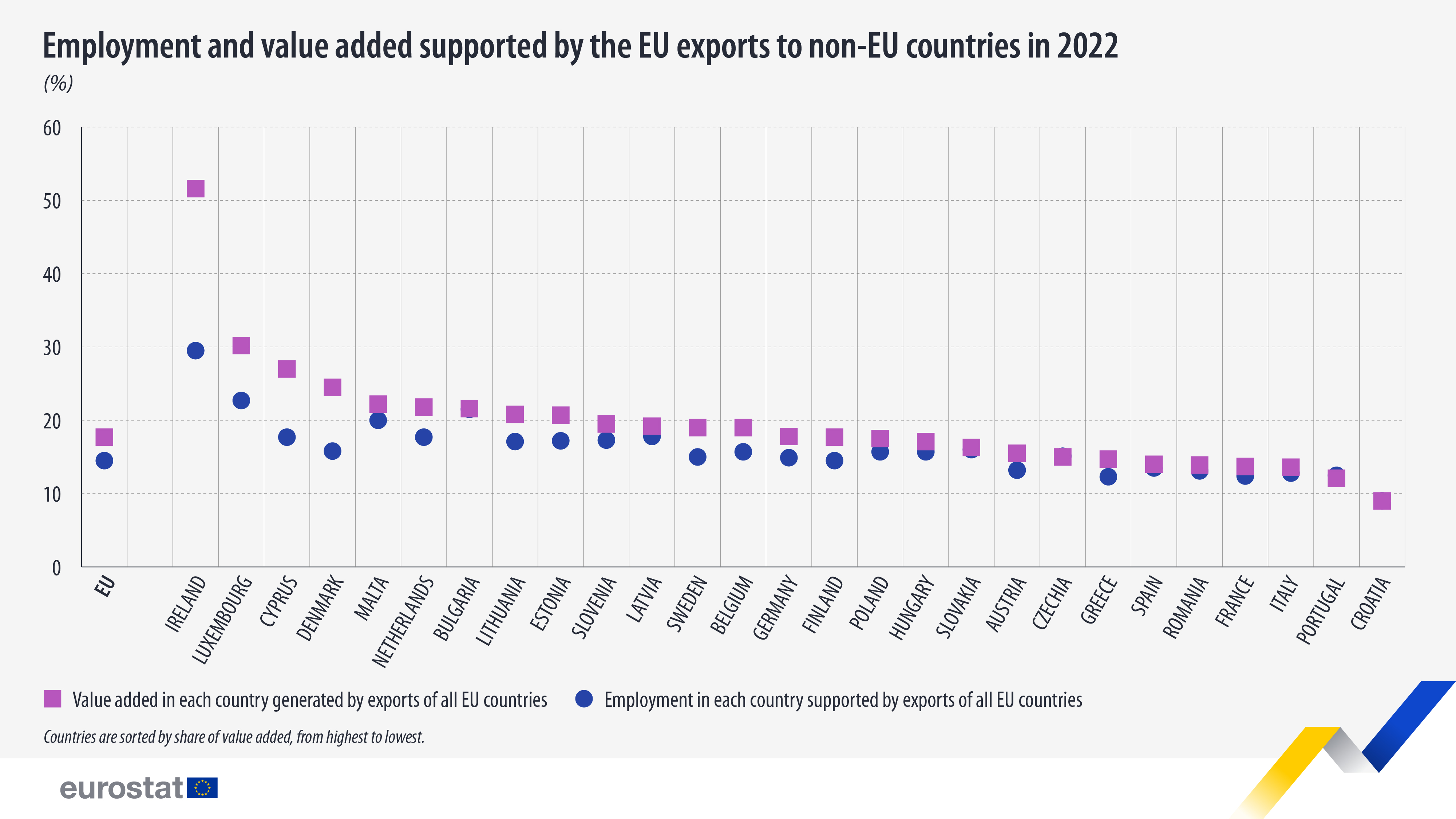Extra-EU exports supported 14.5% of EU jobs in 2022

In 2022, EU exports to non-EU countries generated €2 526 billion of gross value added, or 17.7% of the total gross value added in the EU. The share increased by 0.2 percentage points (pp) compared with 2021 (from 17.5%) and by 3.9 pp compared with 2010 (from 13.8%).
Jobs of 31.1 million people in the EU were supported by exports to non-EU countries in 2022 and they accounted for 14.5% of the total EU employment. The share remained stable compared with 2021 and increased by 2.6 pp compared with 2010 (from 11.9%).

Source datasets: Eurostat calculations
This information comes from Full international and global accounts for research in input-output analysis (FIGARO) tables, published today. This article presents just a handful of findings from a more detailed Statistics Explained article employment and value added in EU exports.
In 2022, Ireland was the EU country most reliant on EU exports to non-EU countries, with over half of its total value added (51.6%) generated by these exports. Luxembourg followed with 30.2% and Cyprus with 27.0%.
In contrast, the lowest shares of value added from EU exports to non-EU countries were recorded in Croatia (9.0%), Portugal (12.1%), and Italy (13.6%).

Source datasets: Eurostat calculations
The share of employment supported by EU exports in total employment was the highest in Ireland (29.5%), Luxembourg (22.7%) and Bulgaria (21.5%).
The lowest shares were recorded in Croatia (9.0%) Greece (12.3%) and France (12.4%).
For more information
- Statistics Explained article employment and value added in EU exports - an analysis with FIGARO data
- Thematic section on European Systems of Accounts supply, use and input-output tables
- Database on European Systems of Accounts supply, use and input-output tables
If you have any queries, please visit our contact us page.
